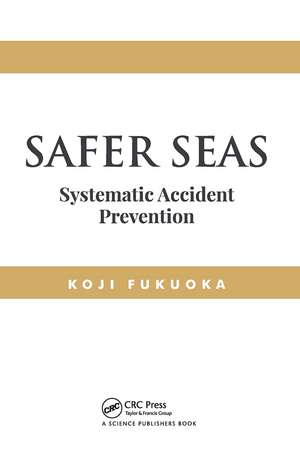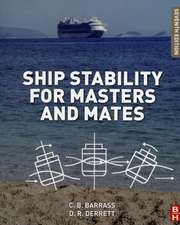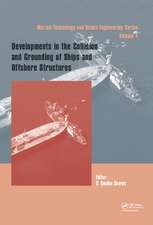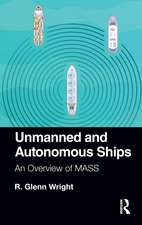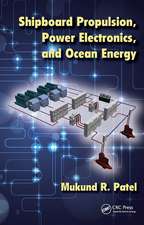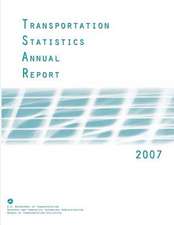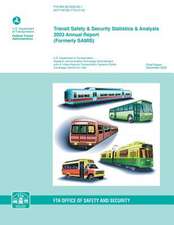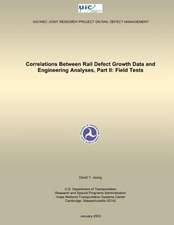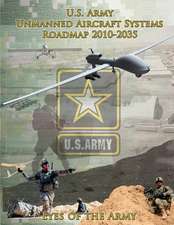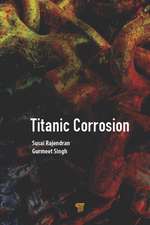Safer Seas: Systematic Accident Prevention
Autor Koji Fukuokaen Limba Engleză Paperback – 31 mar 2021
This book discusses systematic accident prevention by integrating multi-disciplinary expertise based on academic research, the quality management system which has already proved its effectiveness in other fields, and findings of the author’s research. In systematic accident prevention, the weaknesses of a system within which accidents and incidents have occurred are viewed by combining scientific accident investigation data based on the International Maritime Organization model and the accident model. The nature of every type of marine accident, such as collisions, groundings, occupational casualties, etc., are derived by combining the accident model and statistical data. System weaknesses are rectified by the risk reduction method of risk management, and the rectified performance is incorporated in improvement in the system by the PDCA cycle, which is the core of the Safety Management System. We can see the weakness in the system and reduce the number of accidents and incidents while utilizing limited resources optimally to prevent accidents and incidents.
| Toate formatele și edițiile | Preț | Express |
|---|---|---|
| Paperback (1) | 314.71 lei 6-8 săpt. | |
| CRC Press – 31 mar 2021 | 314.71 lei 6-8 săpt. | |
| Hardback (1) | 989.85 lei 6-8 săpt. | |
| CRC Press – 15 iul 2019 | 989.85 lei 6-8 săpt. |
Preț: 314.71 lei
Preț vechi: 365.32 lei
-14% Nou
Puncte Express: 472
Preț estimativ în valută:
60.23€ • 65.40$ • 50.59£
60.23€ • 65.40$ • 50.59£
Carte tipărită la comandă
Livrare economică 22 aprilie-06 mai
Preluare comenzi: 021 569.72.76
Specificații
ISBN-13: 9780367779504
ISBN-10: 0367779501
Pagini: 276
Dimensiuni: 156 x 234 mm
Greutate: 0.56 kg
Ediția:1
Editura: CRC Press
Colecția CRC Press
Locul publicării:Boca Raton, United States
ISBN-10: 0367779501
Pagini: 276
Dimensiuni: 156 x 234 mm
Greutate: 0.56 kg
Ediția:1
Editura: CRC Press
Colecția CRC Press
Locul publicării:Boca Raton, United States
Cuprins
Table of Contents:
History of Marine Accidents, Accident Investigation and Prevention
Prior to the loss of the Titanic
The Titanic
SOLAS Convention
Accidents and international efforts
The Herald of Free Enterprise and Exxon Valdez disaster
Shift from hardware to human factors issues
Implementation of safety management system
Development of comprehensive accident investigation
The Costa Concordia disaster
Similar accidents and insights
The number of accidents decreased?
Conclusions
Mechanism of Accident Occurrence
Concept of hazard and accident
Effect of a layer of defense
Situation of defenses in-depth and accidents
Human factors and accidents
Conclusions
Accident Model
Background surrounding accidents
Historical background of accident model
Problems on each accident model
Characteristics of each industry
Accident model applicable to each industry
Conclusions
Contributing Factors of Accident Occurrence
Introduction
Central liveware
Liveware-hardware
Liveware-software
Liveware-environment
Liveware-peripheral liveware
Conclusions
Preparation for Accident Investigation
Introduction
The human error
Risk management
ISM Code
Core of quality management system
Contents of ISM Code
Implication of the PDCA cycle in an accident
Conclusions
On-site investigation
Introduction
Health and safety
Evidence
Assessing the evidence
Conclusions
Analysis Methods
Introduction
Analysis process
Event and Contributory Factors Charts
Guidelines to produce ECFC
Construction of a marine accident investigation report
Conclusions
Visualization of Weakness in the System
Introduction
Background
Holes
Latent conditions
How to find a hole at a real accident
Holes and latent conditions
Abstract generalizations (general characteristics of accidents)
Unresolved issues on the SCM
The SCM in maritime industry
Conclusions
Statistical science and characteristics of each types of accidents
Introduction
Quantification of the SHEL element
Relationship between the hole location and the number of hole occurrence
Quantification accident model
Limitations of the study
Conclusions
Convergence of accident models
Introduction
Summary of the sample accident
Analytical method
Limitations of analysis
Results
Convergence of different type of model
Conclusions
Rectification of the weakness and improvement of the system
Introduction
Principles of the systematic accident prevention
Process of systematic accident prevention
Difference between an accident and an incident
Conclusions
References
Notă biografică
Dr. Koji Fukuoka has engaged in safety, security and risk management for about 33 years. He graduatedg from Kagoshima University with a Bachelor of Science of Fisheries in 1981. Since then, he has accomplished the core of safety management system as creation of business continuity plans (BCP), education and training of emergency situations, search and rescue operations during accidents, accident investigations, creation of accident preventive measures through his tenures of Japan Coast Guard, Japan Transport Safety Board (JTSB), International Registries Far East Ltd, Mandarin Oriental Tokyo and the other maritime companies.
During the tenure of the JTSB (from 2009 to 2016), Dr. Fukuoka produced many marine accident reports, including very serious marine accidents, as an investigator-in-charge, studied "Fundamentals of accident investigation" at the Cranfield University, the United Kingdom, in 2011, designated as an analyst of Correspondence group in Sub-Committee on Implementation of IMO Instruments, trained government administrators of the Philippines on national training course on Marine Casualty and Incident Investigation as the IMO consultant in 2014.
Furthermore, he studied risk management, human factors, safety and quality management system, accident investigation and analysis, ISO, multivariate analysis, accident models and so forth to reduce the number of marine accidents at the Graduate School of Maritime Sciences, Kobe University, and received a Ph.D. in Maritime Science and Technology in 2016.
He has produced the e-learning materials on "Fundamentals on accident investigation" and "Systematic approach on accident prevention" in cooperation with the International Maritime Safety Security Environment Academy (IMSSEA in Genova, Italy) in 2017 and is designated as a lecturer from IMSSEA, and a research fellowship from the Ohara Memorial Institute for Science of Labour (Tokyo, Japan).
As an accident investigator at Japan Transport Safety Board, Dr. Koji Fukuoka has conducted numerous accident investigations and analyses. He was an IMO consultant for the IMO Model Course: Safety Investigation into Marine Casualties and Marine Incidents. He has worked on accident occurrence mechanism and prevention and developed new accident models, and published several articles on accident prevention. Dr. Koji Fukuoka has a doctorate from the Graduate School of Kobe University. He is currently the Manager of the Occupational Health and Safety Section and a Crisis Management Specialist at the Okinawa Institute of Science and Technology Graduate University in Okinawa, Japan.
During the tenure of the JTSB (from 2009 to 2016), Dr. Fukuoka produced many marine accident reports, including very serious marine accidents, as an investigator-in-charge, studied "Fundamentals of accident investigation" at the Cranfield University, the United Kingdom, in 2011, designated as an analyst of Correspondence group in Sub-Committee on Implementation of IMO Instruments, trained government administrators of the Philippines on national training course on Marine Casualty and Incident Investigation as the IMO consultant in 2014.
Furthermore, he studied risk management, human factors, safety and quality management system, accident investigation and analysis, ISO, multivariate analysis, accident models and so forth to reduce the number of marine accidents at the Graduate School of Maritime Sciences, Kobe University, and received a Ph.D. in Maritime Science and Technology in 2016.
He has produced the e-learning materials on "Fundamentals on accident investigation" and "Systematic approach on accident prevention" in cooperation with the International Maritime Safety Security Environment Academy (IMSSEA in Genova, Italy) in 2017 and is designated as a lecturer from IMSSEA, and a research fellowship from the Ohara Memorial Institute for Science of Labour (Tokyo, Japan).
As an accident investigator at Japan Transport Safety Board, Dr. Koji Fukuoka has conducted numerous accident investigations and analyses. He was an IMO consultant for the IMO Model Course: Safety Investigation into Marine Casualties and Marine Incidents. He has worked on accident occurrence mechanism and prevention and developed new accident models, and published several articles on accident prevention. Dr. Koji Fukuoka has a doctorate from the Graduate School of Kobe University. He is currently the Manager of the Occupational Health and Safety Section and a Crisis Management Specialist at the Okinawa Institute of Science and Technology Graduate University in Okinawa, Japan.
Descriere
The book discusses how to conduct systematic accident prevention by using scientific accident investigation, accident model, statistical science, risk management and the PDCA cycle (the core of the Safety Management System), while visualizing the weakness of a system.
